Future NSTA Conferences
STEM Forum & Expo
2017 Fall Conferences
National Conference
Follow NSTA
By Mary Bigelow
Posted on 2017-07-06
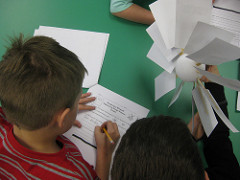 I’m looking for ideas to integrate physical science and social studies at the middle school level. — E., New Jersey
I’m looking for ideas to integrate physical science and social studies at the middle school level. — E., New Jersey
Inventions and inventors could be an interesting context to explore the connections between science, engineering, technology, history, and economics.
A social studies colleague framed a unit around two questions: Why do we invent or innovate? How do some inventions and innovations change society? The unit started with a discussion and demonstrations of 19th century communications technologies (telegraph and telephone), and students compared them with today’s cell phones and texting (which the students readily identified with). The students then investigated how the technology of the Industrial Revolution sparked changes that transformed the United States from an agricultural to an industrial economy, from a rural to an urban society.
To connect with physical science, topics such as mechanical forces and simple machines, motion, electricity and magnetism, and light and sound waves could be investigated in the context of inventions and technology and their impact on society. Students could engage in building projects, tinkering with things to see how they work, designing solutions to problems, and working with robotics, computers, and other electronics. Increasingly common “makerspaces” in schools and libraries provide students with the resources to collaborate, design, and create solutions.
As a culminating project, students could become inventors themselves—identifying a problem, designing and testing an invention to solve it, and marketing their invention to others, explaining the possible impact on the users. NSTA journals have articles showing young classroom inventors and “invention conventions.” (This Resource Collection has some of these articles and other online resources).
In the context of science, technology, engineering, arts, and mathematics STEM/STEAM education and the engineering focus of the NGSSNext Generation Science Standards, students should understand and have experiences with the processes of inventing and innovating, addressing the question “How do we invent inventors?”
Photo: http://tinyurl.com/jy83oqq
By Carole Hayward
Posted on 2017-07-06
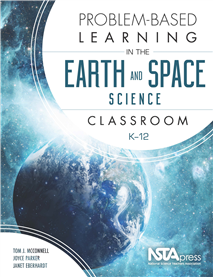 Problem-based learning (PBL) offers an excellent way to capture students’ imaginations, stimulate their curiosity, and engage them in deep learning. The new NSTA Press book Problem-Based Learning in the Earth and Space Science Classroom K-12 by Tim J. McConnell, Joyce Parker, and Janet Eberhardt provides step-by-step instruction and tools to help teachers implement PBL in the classroom. Both informative and practical, the book breaks down PBL strategies into bite-sized chunks.
Problem-based learning (PBL) offers an excellent way to capture students’ imaginations, stimulate their curiosity, and engage them in deep learning. The new NSTA Press book Problem-Based Learning in the Earth and Space Science Classroom K-12 by Tim J. McConnell, Joyce Parker, and Janet Eberhardt provides step-by-step instruction and tools to help teachers implement PBL in the classroom. Both informative and practical, the book breaks down PBL strategies into bite-sized chunks.
“One of the strengths of the PBL framework is that learners are active drivers of the learning process and can develop a deeper understanding of the concepts related to the problem starting from many different levels of prior understanding. PBL is an effective strategy for both novices and advanced learners. PBL is also flexible enough to be useful in nearly any science context,” the authors state.
The key to effective implementation is teacher planning, the authors explain. That’s where this book can help. PBL is a teaching strategy that presents learners with authentic scenarios that represent “problems” to be worked out using concepts, background knowledge, research, and investigations.
The book offers classroom-tested PBL problems that were developed as part of a National Science Foundation-funded program. Problem-Based Learning Project for Teachers brought teachers together to use the PBL framework with eight content strands. As a result, the problems presented in the book have been tested and refined.
In addition to offering background information on the fundamentals of PBL, teaching strategies, and relevant research, the book provides chapters on Earth’s Landforms and Water, Rock Cycle and Plate Tectonics, Weather, and Astronomy, and breaks down lessons into bands of K-2, 3-5, 6-8, and 9-12.
For example, the Earth’s Landforms and Water chapter asks students to analyze and interpret data and construct explanations based on evidence of how geoscience processes have changed the Earth’s surface at varying times throughout its history. To put it into practice, students are asked to help a comic book publisher create scenery and story lines that include real geologic formations.
The chapter walks through the assignment, outlining each step to provide guidance and support. In a related comic book exercise featuring a Dolphin heroine, students must imagine a real underwater location and include ocean landforms that Dolphino might encounter.
For this exercise, first students would use topographic maps to find patterns in oceanic landforms as the teacher offers instruction about how to read these image patterns on the map and make sense of what they mean in real life. Next, students are asked to draw what the features would look like if seen from a submarine or underwater camera. What does a continental shelf look like in real life? What about an underwater volcano? This exercise helps students translate what they see on the map to a three-dimensional world, and when they use their imagination for the creative writing exercise they deepen their understanding. From academic to creative, the assignments allow students to use a range of skills and knowledge.
Check out the free sample chapter that explains how to facilitate Problem-Based Learning in the classroom.
Are you ready to implement PBL in your science classroom? You can buy the book in the NSTA Store here.
Also available from these authors is the companion book Problem-Based Learning in the Life Science Classroom, K–12.
 Problem-based learning (PBL) offers an excellent way to capture students’ imaginations, stimulate their curiosity, and engage them in deep learning. The new NSTA Press book Problem-Based Learning in the Earth and Space Science Classroom K-12 by Tim J.
Problem-based learning (PBL) offers an excellent way to capture students’ imaginations, stimulate their curiosity, and engage them in deep learning. The new NSTA Press book Problem-Based Learning in the Earth and Space Science Classroom K-12 by Tim J.
By Debra Shapiro
Posted on 2017-07-06

At P.S. 333 Manhattan School for Children in New York City, science teacher Shakira Provasoli encourages students to place recyclable materials in the recycle bin.
Taking actions to become a zero-waste school can be “a big pain,” says Brian Shmaefsky, professor of biology and environmental science at Lone Star College in Kingwood, Texas. But he adds, “As an environmental scientist, I typically look at waste reduction because of budget concerns…Now [that] we can provide digital [assignments and tests] at school, it has really made a big difference in reducing paper costs. [We’ve seen a] 95% drop in costs.”
While “budget cuts drive zero-waste efforts,” he allows, “a cost-cutting mentality [must eventually be] replaced by a sustainability mentality.”
In labs, says Shmaefsky, zero waste “gets tricky. Traditional labs use a lot of reagents, animal specimens, and disposables.” He advises, “First try to do as much virtually as possible; students get the same effect without chemical and animal waste. With virtual labs, [students] can make an error and not have to start over. [After the virtual lab,] then do an actual lab, and [you’ll] have less mistakes made by students.”
In his school’s chemistry courses, teachers “took a reduction approach [by using] smaller amounts of reagents per class. Or [they substituted] labs [for ones in which] some chemicals are reusable, versus [having] waste disposal. In simple procedures, [you can] reuse reagents,” he relates.
Biology teachers found “a vendor that [sold] simple home kits with reusable, safe materials. Students could buy the kits instead of paying a lab fee,” Shmaefsky contends. “When students are finished with the kits, as the group project, students could clean them up and donate them to schools that didn’t have the materials. [Schools receiving donations] were particularly elementary schools; we gave them instructions to recycle or reuse the kits. Anything that had to be disposed of was environmentally friendly and in small amounts….
“A civic engagement project made our environmental science class very green. We became a recipient of trash; students collected trash and built their own environmental equipment. [For example, instead of throwing soda bottles in the trash,] they made Berlese funnels out of [the] bottles,” Shmaefsky recalls.
At P.S. 333 Manhattan School for Children in New York City, K–5 science teacher Shakira Provasoli serves as sustainability coordinator and has spearheaded zero-waste efforts. Last year, when a kindergarten class discovered their classroom couldn’t achieve zero waste because of the cafeteria food’s packaging, she had the kindergarteners write letters explaining the problem, and sent them to the city’s Department of Education’s Office of Sustainability. When the city’s departments of sanitation and education chose 100 schools to launch a zero-waste pilot program, her school was among them.
“It was the first year my school had a lot of resources and people devoted to zero waste,” says Provasoli. “It was a lot easier to do because I was not the only one to promote sustainability.”
A group of parents found a source of compostable trays to replace plastic foam trays, for example. “A waste disposal service agreed to pick up the composted trays for free if the school weighed [the amount of compost] for a month…We went from 12 bags of garbage collected seven years ago to not even one full bag on the first day,” she reports. “We’re hoping to do this with utensils; we haven’t eliminated plastic utensils yet.”
Provasoli works with TerraCycle (https://goo.gl/2xJxCt), a program offering free national recycling solutions. “They send us a link for shipping labels for sending [food packaging waste] to them. We accumulate points that can be redeemed for money,” she explains.
“My school has just adopted a zero-waste cafeteria [policy], and also enhanced classroom recycling,” says Lisa Wininger, a science teacher at Plainwell Middle School in Plainwell, Michigan. “In the cafeteria, we took all the trashcans away, and took the dumpsters away; we use recycle bins instead,” she explains. Because her school is in an agricultural community, “we recycle food waste for local pig farming. The students wanted to give food to the pigs. We really cut down on the amount of waste that has to go to a landfill: Food waste is down 90%; non-food waste is down by approximately 75%.”
Wininger says her students are proud of their efforts to recycle and reuse. “It gives them a new sense of pride in themselves and their abilities, knowing they can make a difference in their community to effect change.”
The National Oceanic and Atmospheric Administration’s Climate Stewards Education Project (CSEP; see https://goo.gl/Arl7fs), “provided the impetus [for my school] to create a zero-waste plan,” she relates. CSEP provides educators of elementary through university students with professional development, collaborative tools, and support for their zero-waste programs and connects teachers with a mentor.
“My mentor in Washington, D.C., Dale Glass, gives good ideas on [reducing our] carbon footprint,” Wininger observes. CSEP presents free webinars, and “we can network online and give one another suggestions,” she notes.
“We have a recycling club at our school, so both the students and I are trying to be zero waste,” says Cindy Hopkins, seventh- and eighth-grade science teacher at Kaffie Middle School in Corpus Christi, Texas. “All of our projects must be done with recycled goods…[I tell students that our] bins should be full every day.”
Teachers “have to plan for zero waste, have forethought. You have to explain it to students ahead of time. It’s a constant thought about what goes into the recycling bin. The teacher has to be careful of what he or she throws out,” Hopkins contends.
The benefit for students is “if we can do it here, you can do it in your home. It becomes a habit they can do at home,” she asserts.
She adds that Communities In Schools of the Coastal Bend, a local nonprofit dropout prevention agency, “holds a recycling contest, and I require all students to participate. They learn so much when they do…This year, we’re creating a poster, and one poster from the city will [be chosen to appear] on city dump trucks.”
Rebecca Newburn, science and math teacher at Hall Middle School in Larkspur, California, has created a Zero Waste Challenge in which students analyze where they create waste in their lives, then devise a plan and implement it to reduce their waste. Her website for the challenge (https://goo.gl/22ZzBs) has suggestions and resources for becoming a zero-waste school or home.
Newburn also was a pilot teacher of KQED Learning’s Engineering for Good, a three-week, project-based learning unit for middle school science classrooms that focuses on developing solutions to the negative environmental impact of plastics. In the unit, which supports Next Generation Science Standards, students use the engineering design process to define a problem, brainstorm solutions, develop prototypes, and iterate on their designs. As a final project, students produce videos about their solutions. Access the unit at https://goo.gl/46CcMt.
This article originally appeared in the Summer 2017 issue of NSTA Reports, the member newspaper of the National Science Teachers Association. Each month, NSTA members receive NSTA Reports, featuring news on science education, the association, and more. Not a member? Learn how NSTA can help you become the best science teacher you can be.
The mission of NSTA is to promote excellence and innovation in science teaching and learning for all.
Follow NSTA

At P.S. 333 Manhattan School for Children in New York City, science teacher Shakira Provasoli encourages students to place recyclable materials in the recycle bin.
By Peggy Ashbrook
Posted on 2017-07-03
 Pride in their work is evident when young children point to a bean plant in the garden row and say, “I planted that seed.” Being the planter makes children more interested in the care of the plants, more willing to avoid stepping on them and to carry buckets of water from the rain barrel.
Pride in their work is evident when young children point to a bean plant in the garden row and say, “I planted that seed.” Being the planter makes children more interested in the care of the plants, more willing to avoid stepping on them and to carry buckets of water from the rain barrel.
Early childhood programs include those that operate year-round such as family child care homes and full day child care centers or preschools, and those that follow a “school year” schedule of  August/September-June, such as half-day preschools and public and private elementary schools. Care of the gardens in these programs often follows the calendar, leaving gardens untended if the program is not in session. This is one of the hurdles that teachers face when children’s interest in planting seeds and growing plants points to establishing a garden. A garden planted in spring might die if not watered from June-August but that just provides space to begin anew when the children return in the fall. And you might be surprised by what survives with just the water provided by precipitation.
August/September-June, such as half-day preschools and public and private elementary schools. Care of the gardens in these programs often follows the calendar, leaving gardens untended if the program is not in session. This is one of the hurdles that teachers face when children’s interest in planting seeds and growing plants points to establishing a garden. A garden planted in spring might die if not watered from June-August but that just provides space to begin anew when the children return in the fall. And you might be surprised by what survives with just the water provided by precipitation.
 Setting up a system of care that doesn’t depend on only a few people is helpful in maintaining a garden, even one as small as a large pot outside the door. A system might include adding “water carrier” to the class job chart and putting a gallon container next to the place children line up to go outside as a visual reminder of the needs of the garden. Families can be added to the system. Children can decorate an invitation to families to do a little weeding at drop-off or pick-up time, allowing their child to transition to school or play just 5 more minutes. A practice can be established that when it’s time to stop playground action for a water-break for all, children carry a cup to the garden after drinking their fill.
Setting up a system of care that doesn’t depend on only a few people is helpful in maintaining a garden, even one as small as a large pot outside the door. A system might include adding “water carrier” to the class job chart and putting a gallon container next to the place children line up to go outside as a visual reminder of the needs of the garden. Families can be added to the system. Children can decorate an invitation to families to do a little weeding at drop-off or pick-up time, allowing their child to transition to school or play just 5 more minutes. A practice can be established that when it’s time to stop playground action for a water-break for all, children carry a cup to the garden after drinking their fill.

 Gardening experiences often include observations and interactions with insects, those that are beneficial to our garden’s production of food and those that are not. By caring for an insect year-round, the Tenebrio beetle, we can help children feel comfortable when they encounter others in the garden.
Gardening experiences often include observations and interactions with insects, those that are beneficial to our garden’s production of food and those that are not. By caring for an insect year-round, the Tenebrio beetle, we can help children feel comfortable when they encounter others in the garden.
Use this list of resources to learn more about gardening with young children:
Does your program “provide multiple opportunities for children to try a new food?” Do you have buckets, hand trowels, and harvesting baskets on hand for children’s use? Early Sprouts Institute offers resources such as guidelines to help preschools become “nutritionally purposeful environments,” and a list of the kind of tools that should be available for young children to use in the garden.
Farm to Preschool Subcommittee of the National Farm to School Network, Preschool Gardens page has a list of websites with information to help you start and sustain your preschool garden.
A Gardening Angels How-To Manual: Easy Steps to Building A Sustainable School Garden Program by Common Ground Garden Program, University of California Cooperative Extension Los Angeles County says that “Gardening is a skill everyone can develop.”
Food and Nutrition Service’s Office of Community Food Systems online brochure on School Gardens: Using Gardens to Grow Healthy Habits in Cafeterias, Classrooms, and Communities offers safety management tips for healthy harvesting and use of school grown produce.
Food Safety Tips for School Gardens, from the National Food Service Management Institute, University of Mississippi, provides additional school garden safety recommendations, such as where to site a garden and how to ensure safe soil.
The Spruce, a “home website,” has information about when produce is in season and recipes for using it.
US Department of Agriculture Food and Nutrition Service “School Gardening” page lists questions for programs to consider when gardening.
Read more about gardening with children on these NSTA blog posts and start planning now for establishing a gardening practice with your children:
Gardening in schools by Mary Bigelow
Gardening: with limitations and some success
Garden observations and questions
The Joys of Gardening with Young Children by Gail Laubenthal
Choosing plants for fall school garden lessons
May these resources inspire and sustain you in your plan to begin or continue gardening with young children!
By Mary Bigelow
Posted on 2017-06-30
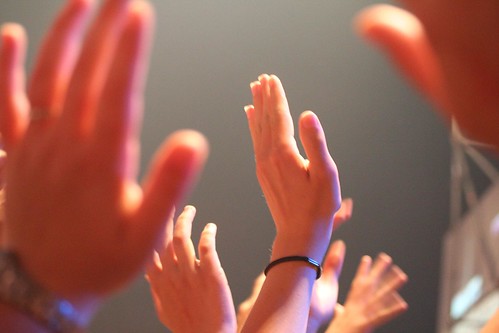 What do I do when a student asks a question related to the lesson and I don’t know the answer? I don’t have a strong background in science, and as a beginning teacher this makes me nervous. —C., Massachusetts
What do I do when a student asks a question related to the lesson and I don’t know the answer? I don’t have a strong background in science, and as a beginning teacher this makes me nervous. —C., Massachusetts
Virtually every teacher has been in this situation, with curious students or those who want more in-depth information. (I’ve studied paleontology, but my 6-year-old grandnephew has a passion for dinosaurs beyond my knowledge base!)
If a student asks a question and you don’t know the answer, the worst responses are to dismiss the question or make up an answer and move on. It’s okay to say, “That’s an interesting question. I’m not sure of the answer.” What happens next depends on the nature of the question and the time you have.
If the question is pertinent to the lesson, you could ask the class, “What do you think? Does anyone have an idea?” or use a think-aloud as a teachable moment to model how to find information. Some teachers have student teams act as “checkers” who go online to find answers.
Another option is for the student to write the question on a card and post it on a bulletin board “parking lot” to be addressed later. Periodically, revisit the parking lot and either research the answers yourself, or encourage students to look up information at home or during free time and report back to the class. Remove the card when the question is addressed, thanking the student for asking it. It would be a powerful example for students to see you post your own questions, too.
No one expects you to be a walking Wikipedia, but your guidance and encouragement can create a safe place for students to ask questions and search for answers.
Photo: http://www.flickr.com/photos/rongyos/2686415336/
 What do I do when a student asks a question related to the lesson and I don’t know the answer? I don’t have a strong background in science, and as a beginning teacher this makes me nervous. —C., Massachusetts
What do I do when a student asks a question related to the lesson and I don’t know the answer? I don’t have a strong background in science, and as a beginning teacher this makes me nervous. —C., Massachusetts
By Mary Bigelow
Posted on 2017-06-28
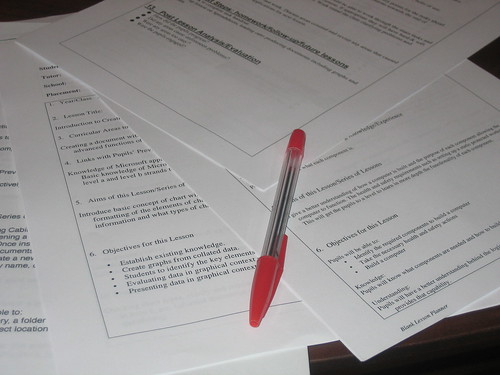 I’m a recent graduate, looking for an elementary teaching position. I’ve heard I could be asked to teach a lesson as part of an interview. How should I prepare? —N., Ohio
I’m a recent graduate, looking for an elementary teaching position. I’ve heard I could be asked to teach a lesson as part of an interview. How should I prepare? —N., Ohio
Sometimes the interview process does have a performance component. I’ve been part of the process (as both the interviewer and interviewee) in which applicants were asked to
The interview committee should tell you ahead of time if teaching a lesson is required, with a description of the audience (the committee, real students), how much time, and whether the lesson will be in a classroom or meeting room. The committee should also inform you if there is a particular topic, grade level, or standard you should address.
You could go through your student teaching lessons to find ones that could be adapted. Rather than a lecture, do an activity that engages the audience in learning.
NSTA has several sources of ideas for lessons in the Science and Children (S&C ) journal. The monthly feature Teaching with Trade Books includes two lessons (K-2 and 3-5) that incorporate a children’s book with a related lesson organized around the 5E model. Each lesson also correlates with the Next Generation Science Standards, and many include a link to download student handouts. For example, the April 2017 issue features “Matter All Around Us.”
The “probes” in the Uncovering Student Ideas in Science books from NSTA might also be useful. Some of these have been published in S&C, including one on students’ conceptions about matter
Practice beforehand and bring enough materials and make sure any technology you plan to use works. Good luck!
Photo: http://www.flickr.com/photos/daviddmuir/1410227652
 I’m a recent graduate, looking for an elementary teaching position. I’ve heard I could be asked to teach a lesson as part of an interview. How should I prepare? —N., Ohio
I’m a recent graduate, looking for an elementary teaching position. I’ve heard I could be asked to teach a lesson as part of an interview. How should I prepare? —N., Ohio
Sometimes the interview process does have a performance component. I’ve been part of the process (as both the interviewer and interviewee) in which applicants were asked to
By Mary Bigelow
Posted on 2017-06-26
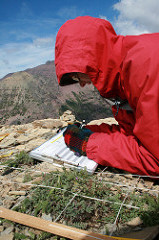 For students of any age who are interested in careers in science and engineering, The Science Teacher features a “Career of the Month” column. This two-page article includes interviews with professionals who use science in their work, a description of the job (work overview, career knowledge, and skills), and advice for students. Here is a sample of careers described in the 2016-17 journals (access other years for more careers):
For students of any age who are interested in careers in science and engineering, The Science Teacher features a “Career of the Month” column. This two-page article includes interviews with professionals who use science in their work, a description of the job (work overview, career knowledge, and skills), and advice for students. Here is a sample of careers described in the 2016-17 journals (access other years for more careers):
For more, see the SciLinks topics Biology Careers, Careers in Chemistry, Careers in Earth Science, Careers in Life Science, Careers in Environmental Science, Careers in Physics, Geologists, Paleontologists, Pharmacologist, Physiologist, Public Health Careers, Wildlife Biologists
Photo: http://www.flickr.com/photos/glaciernps/4427417055/in/photostream/
 For students of any age who are interested in careers in science and engineering, The Science Teacher features a “Career of the Month” column. This two-page article includes interviews with professionals who use science in their work, a description of the job (work overview, career knowledge, and skills), and advice for students.
For students of any age who are interested in careers in science and engineering, The Science Teacher features a “Career of the Month” column. This two-page article includes interviews with professionals who use science in their work, a description of the job (work overview, career knowledge, and skills), and advice for students.
By Korei Martin
Posted on 2017-06-26
Science teachers are science communicators. We all know that. We strive to make difficult concepts easy to understand everyday. If one method of getting the message across doesn’t work, we find a different way to reach our students, our audience. We have the freedom, and indeed, the imperative, to do this and the challenge of making difficult concepts understandable; seeing the “I get it!” look on students’ faces is very rewarding.
I have been a university biology educator for 26 years. Sensing that my science enthusiasm could not be constrained merely to the courses I taught on campus, I jumped into the world of science blogging, onto YouTube, and ultimately onto all manner of social media. While some may call me a science writer or communicator, I prefer to retain the title of science educator because I see my time in the online world as an extension of my role as an educator, helping others learn about science while simultaneously stirring an interest in it. As a teacher, you, too may find yourself interested in the field of science communication as well.
Science communication is a broad and many-faceted field. This #scicommABC list highlights some of the terminology used in science communication, the methods by which we reach our audiences, the people who explain science, and places you can engage even more.
ABSTRACT (n)—It’s the summary and first portion of a scientific paper. If you want to communicate science, you must be familiar with how science works, including how scientists share their findings. Need a refresher course? Check out this article, How to (seriously) Read a Scientific Paper.
BLOG, SCIENCE—There are several types of science blogs, according to this article in WIRED. Analyzers share new information that they have been working on. Explainers help clarify concepts and interpret the science. Linkers share information from one or more other sites. Reviewers analyze books, videos or research papers, and the short blogger shares quick bits of science via social media. Check out the book Science Blogging: The Essential Guide for more information if you want to take the leap to becoming a science blogger.
CLICHES—These spell trouble for every writer, but science communication has their own set of overused clichés. For instance, “the war on cancer”, “shedding light”, “the silver bullet”, “the missing link” (hello, biologists!), “we will have to rewrite the textbook” are just a few that we should banish to a black hole.
DENIERS—These are the folks actively working against science and are the most challenging subset that communicators and teachers try to reach. They are not convinced by current scientific thinking on vaccines, global change, GMOS, evolution and even the shape of planet Earth. How should one best communicate to deniers? Science says the best way is NOT to merely share facts. Intrigued? Learn more here.
EMPATHY – Alan Alda, actor and founder of the Alda Kavli Center for Science Communication, has a new book out called, If I Understood You, Would I Have This Look on My Face? An overarching theme in the book is to increase your empathy in order to help make us all (but especially scientists) better communicators. If we understand where the other person is coming from, we improve our ability to communicate with them.
FEEDBACK—As with learning any new skill, feedback from those in the know will be valuable. Seek out others with experience who can help you and don’t only read messages from the trolls. Science Communication Needs and Best Practices
GLOBAL REACH—With the Internet, your science communication message can reach all parts of the globe. Succeeding there is definitely about knowing your audience. Learn more at Four Steps to Going Global on Social Media.
HUMOR—Some of the best science communicators can make us laugh. When it comes to wit, I think of neuroscientist Robert Sapolsky. His communication style is delightful. If you haven’t read his books or watched his videos, give them a try. Another very funny guy is The Science Comedian. There are also sites that make scientific research seem more lighthearted, such as LOL My Thesis and Overly Honest Methods.
INFRINGEMENT, copyright—Many photos and articles on the Internet have been shared without proper attribution. Don’t perpetuate the cycle. Always provide proper attribution on photos, and give credit where credit is due. One of the best explanations of this is from insect photographer Alex Wild. Read it here.
JARGON—Every profession has it’s own language, and this is very true for science. Sometimes scientists in differing fields cannot understand the jargon of other fields, though they share a common knowledge of the traits of good science observation and experimentation. A communicator can cut through the jargon and explain complex terms more simply.
KNOW YOUR AUDIENCE—Who do you want to reach with your science information? Knowing this will help structure appropriate language to target your audience. How you explain science to a teenager will be different than with a motivated, educated adult and you need to know which one you most want to reach. Learn more at Audience and Purpose at Scitable.
LIVESTREAMING—Google Hangouts on Air, Facebook Live, and Periscope are the newest ways to share demonstrations, interviews, or whatever science related activity you are currently doing. Additionally, sites like NASA are always sharing information on their livestream page. Have you had the chance to use these tools to share science? Learn more about creating a great livestream.
MOVIES—Have you seen Arrival, which highlights the science of linguistics? Did you watch Hidden Figures about the women computers at NASA? What about Apollo 13 with Tom Hanks? How about Thor, where Natalie Portman plays a fictional astrophysicist? Movies with science elements are great ways to begin a conversation about science—whether they get the science wrong or right.
NUMBERS (measure)—As with education, how do we know we are having an impact unless we have numbers? Once you start sharing science, keep track of your metrics. It will help you know whom you are reaching and understand how your audience interacts with your material.
OPEN SCIENCE—The open science movement is motivated by the belief that science resources, including research sharing and educational resources should be made freely available. Most scientific journals require a subscription to access scientific information but many scientists believe science should be free, hence the increase in open source science journals.
PODCASTS—These are like radio programs that can be downloaded to a device to listen when you have time. There are many great science-themed ones out there including Fast Forward, RadioLab, and Science for the People and MANY more. What are some of your favorites?
QUESTIONS—Stephen Strogatz, one of the great mathematics communicators made me think about questions in his essay Writing about Math for the Perplexed and Traumatized “Explaining math well requires empathy. The explainer needs to recognize that there’s another person on the receiving end of the explanation. But in our culture of mathematics, an all-too-common approach is to state the assumptions, state the theorems, prove the theorems, and stop. Any questions? What makes this approach so ineffective is that it answers questions the student hasn’t thought to ask.”
So, we need to know where our audience is in their understanding, and start where we believe they are and answer THOSE questions. Good teachers and communicators do this very well.
RESEARCHERS—Let’s not assume ALL scientists are terrible communicators. Many are jaw-droppingly eloquent when relaying their work to the general public. One researcher’s work I recommend highly is Hope Jahren’s book Lab Girl. Others I recommend are those of doctor and researcher Dr. Siddhartha Mukherjee, Emperor of All Maladies or The Gene.
SOCIAL MEDIA—By now, none of this is new to anyone. Social media is an excellent way to share science in small or big bites. Images on Instagram and Pinterest, microblogging on twitter, longer story sharing on facebook, tumblr and Google Plus have extended the reach for those who aren’t formally trained science writers and journalists. You can learn more at Three Secrets to Social Media for Science Communication
TELEVISION—TV is still a popular venue for communicating science. From Mr. Wizard, Jacques Cousteau, National Geographic Specials on PBS to Bill Nye, Beakman’s Lab, Discovery Channel, MythBusters, and the old and new Cosmos Series, there is much to be learned from well produced science TV shows. Do you have a favorite?
UNDERREPRESENTATION—as with the field of science, the field of science communication suffers from underrepresentation of women and people of color, but not if you know where to look. Actively seek out those who break the old conventions and follow people like Ainissa Ramirez or Danielle Lee. Or, join their ranks and be the inspiration for future generations. Seeing someone like yourself doing science is a powerful motivator for young people.
VISUALS—The Internet is the perfect place to use visual elements to share science. Images tell a story, and some amazing infographics can be found everywhere. Check out Information is Beautiful for some striking examples of infographics.
WRITING—Producing or consuming great science writing is a way to stay engaged with science, either within or outside of your field of expertise. Books are one of my favorite ways to learn something new or merely to see how someone describes my field in a different way. Of course, one can also read newspapers (though few have science writing staff anymore), magazines and online articles as well.
XTRA SPECIAL CELEBRITY COMMUNICATORS include David Attenborough, Bill Nye, and Neil DeGrasse Tyson. We love our “go to” communicators because they are inspiring and able to turn a good science phrase. However, did you know there are many scientists and other communicators out there whose voices should be heard? An initiative tagged #scicommswarm is a Google Doc that is collecting those voices to share with communicators and journalists.
YOUTUBE—Gone are the days where good visual science explanations were only done by BBC and PBS. Now we have SciShow, VSauce, Brainscoop, Periodic Videos, Bozeman Science, Physics Girl, Global Weirding, and so much more. Which ones do you use in the classroom?
ZIMMER—Z is a tough spot to fill, but luckily we have one of the most talented biology writers and communicators who rightly deserves a spot here. I do hope you are reading Carl Zimmer’s work (NYT, STATnews) any chance you get.
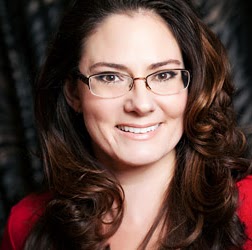
It would have been impossible to cover every aspect of scicomm here. Do you have different ideas about what should have been shared about science communication in this cursory list? For instance, replacing SOCIAL MEDIA with STORYTELLING would be as appropriate. Speak up on twitter with #scicommABC. I’d love to hear your ideas!
Joanne Manaster is a science educator, the host of Read Science!, biology lecturer, and a STEM advocate. Find her on Twitter @sciencegoddess.
Get more involved with NSTA!
Join today and receive NSTA’s peer-reviewed journals; connect on the listserv and get your own questions answered (members can sign up on the list server); or consider joining your peers at an upcoming NSTA Conference on Science Education.
The mission of NSTA is to promote excellence and innovation in science teaching and learning for all.
Follow NSTA
Science teachers are science communicators. We all know that. We strive to make difficult concepts easy to understand everyday. If one method of getting the message across doesn’t work, we find a different way to reach our students, our audience. We have the freedom, and indeed, the imperative, to do this and the challenge of making difficult concepts understandable; seeing the “I get it!” look on students’ faces is very rewarding.
By Cindy Workosky
Posted on 2017-06-26
Who is Ivor Robson, and why is he associated with anchoring phenomena? If you are a longtime golf aficionado, you know that Ivor Robson had a special role at the British Open. Robson spent 41 years introducing each player on the first tee, and he never missed a tee time…ever. In addition, he served as the anchor for every player, who couldn’t begin playing until Robson called out his or her name and native country.
I think Ivor Robson’s role in golf relates to anchoring phenomena in the Next Generation Science Standards (NGSS) because before our students can start their science journey, their teachers need to anchor it to something strong, such as an anchoring question or phenomenon, to serve as a foundation. Anchoring phenomena give students and teachers the stability to start a science lesson and the flexibility to formulate questions through the science processes.
How do anchoring phenomena enhance the shift from content-driven to process-driven classrooms?
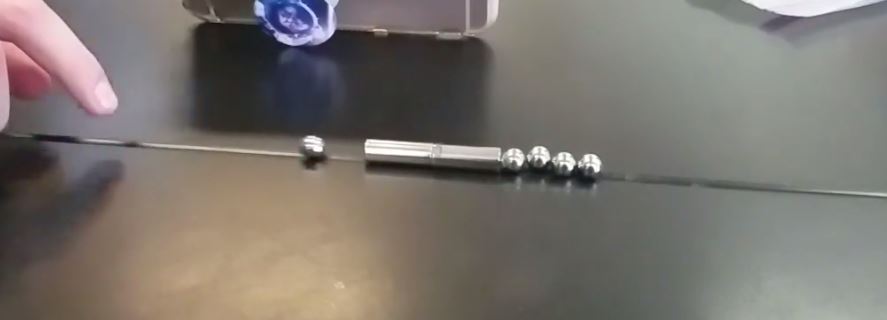 I first began to understand the purpose of anchoring phenomena a few years ago when I attended a professional development session with fellow NSTA curator Brian Aycock. I don’t recall the question he posed, but I do remember it had something to do with water, and he showed us an image of a home that was buried in snow. By using that image as the anchoring event, Aycock demonstrated how it could generate many more questions from us. He explained that future questions can come from student discussions, facilitated by the teacher.
I first began to understand the purpose of anchoring phenomena a few years ago when I attended a professional development session with fellow NSTA curator Brian Aycock. I don’t recall the question he posed, but I do remember it had something to do with water, and he showed us an image of a home that was buried in snow. By using that image as the anchoring event, Aycock demonstrated how it could generate many more questions from us. He explained that future questions can come from student discussions, facilitated by the teacher.
 Anchoring phenomena can be a game changer for science teachers. Our goal always has been to help students understand the process of science. In the past, we’ve tried to accomplish that by using vocabulary lists, encyclopedic texts, and culminating lab activities. Did we succeed? I think the best answer is partially. We helped students comprehend terms and cool science stuff, but we didn’t give them an experience that was rich enough for them to actually process science.
Anchoring phenomena can be a game changer for science teachers. Our goal always has been to help students understand the process of science. In the past, we’ve tried to accomplish that by using vocabulary lists, encyclopedic texts, and culminating lab activities. Did we succeed? I think the best answer is partially. We helped students comprehend terms and cool science stuff, but we didn’t give them an experience that was rich enough for them to actually process science.
 Anchoring phenomena based in the three dimensions of the NGSS has taken science education from traditional content-based instruction to process-based discovery. Students are no longer expected to simply memorize vocabulary lists and take a multiple-choice test to show science understanding. Today, students are using anchoring phenomena to “figure out” science. Starting with the initial phenomenon question, students are advancing on their own path to science understanding.
Anchoring phenomena based in the three dimensions of the NGSS has taken science education from traditional content-based instruction to process-based discovery. Students are no longer expected to simply memorize vocabulary lists and take a multiple-choice test to show science understanding. Today, students are using anchoring phenomena to “figure out” science. Starting with the initial phenomenon question, students are advancing on their own path to science understanding.
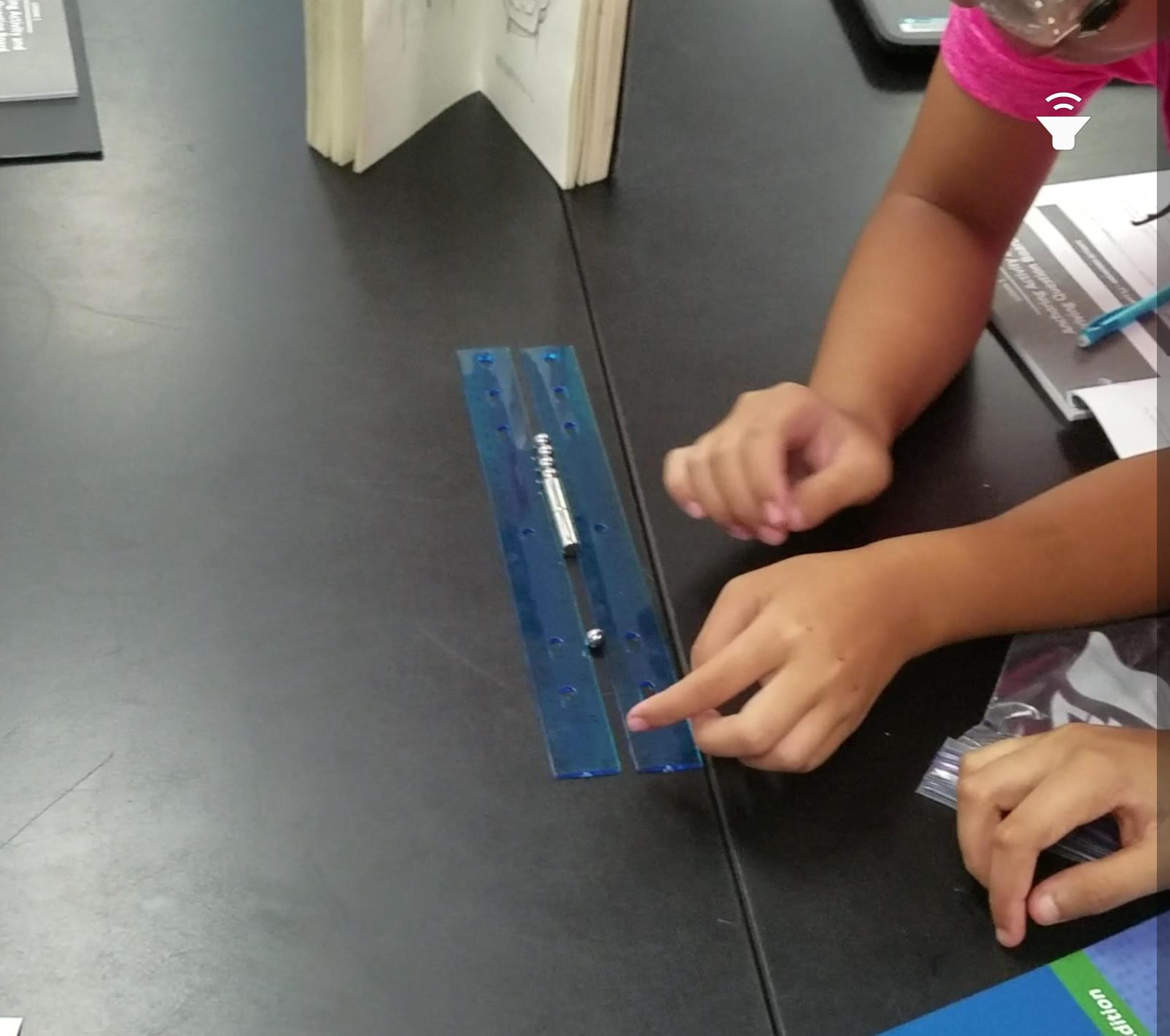 What do anchoring phenomena look like in the classroom?
What do anchoring phenomena look like in the classroom?
I work at Francis Granger Middle School in Indian Prairie District 204 in northeast Illinois. This past year, we adopted the IQWST resource developed by Activate Learning. I have four science units in my current rotation, and each is based on an anchoring phenomenon.
One of my units, How will it move?, is based on the anchoring event of a magnetic cannon. In this cannon, a ball bearing is rolled slowly into two magnets. The energy from the first ball bearing is amplified by the magnets, which then propel the last ball bearing away from the apparatus at a higher rate of speed. The students worked and discovered together, then built magnetic cannons and simply explored the phenomenon. My only guiding question was, “How do you think this is occurring?”
This question guided them in their discovery. We asked more questions; small groups collaborated; and we became co-owners of the process of exploring that phenomenon.
For the next eight weeks, we used our questions, and the sub-questions from our resource, to gradually discover how things move. The anchoring phenomenon kept us rooted in our Performance Expectation (PE) and Disciplinary Core Idea (DCI). The anchoring phenomena also gave us the flexibility to naturally connect Crosscutting Concepts (CCC) and examine with Science and Engineering Practices (SEP). The anchoring phenomena allowed the three dimensions of the Framework to come alive in our classroom.
Anchoring phenomena were visible in my classroom in obvious ways. The discussions were deep and rich. The collaboration was group-based and meaningful for all learners. The science process modeling developed over time and became more and more detailed. Most importantly, students had fun as they used anchoring phenomena to explore and discover science. Learning is meant to be fun.
Why are anchoring phenomena important to the NGSS classroom?
Anchoring phenomena hold students and teachers to a PE, yet offer the flexibility to develop knowledge through questioning. They also foster an intentional use of the three dimensions of NGSS and spark activity and learning in the classroom. Anchoring phenomena provide relevance that makes students eager to learn what is next in the science process. How have you seen anchoring phenomena change your classroom? How have anchoring phenomena changed how you teach science?
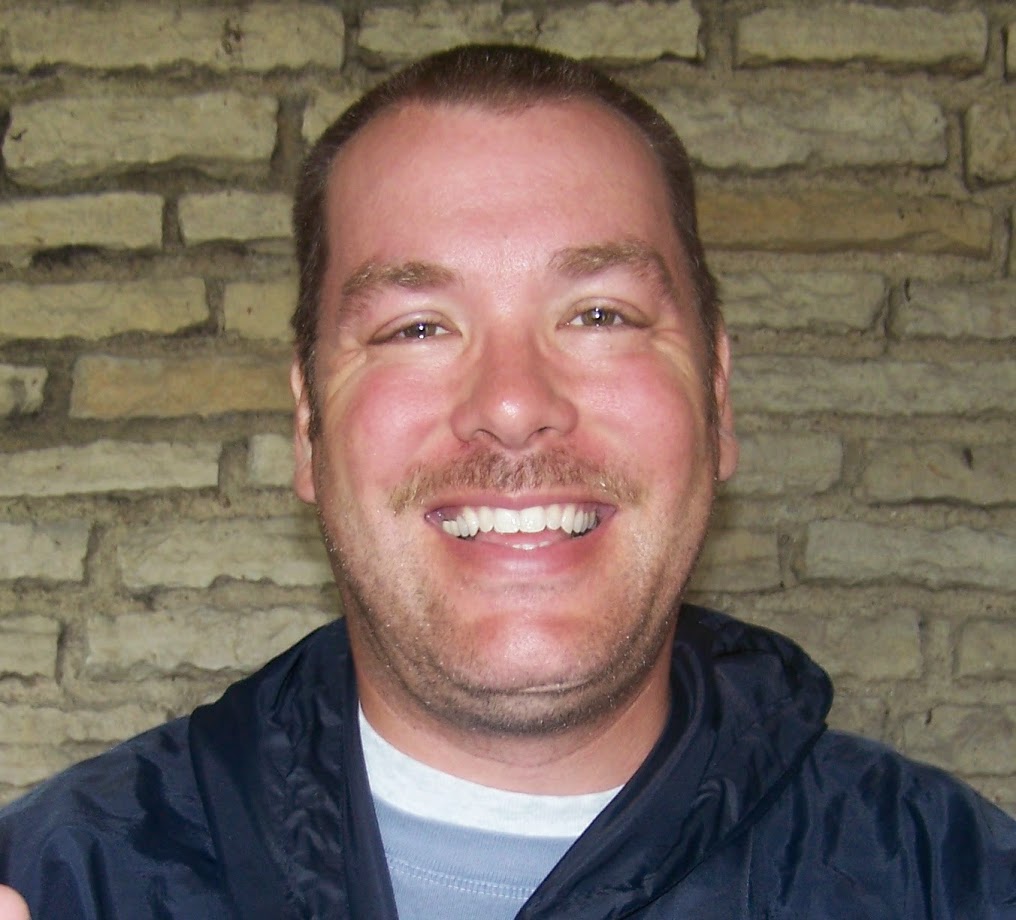
Brian Klaft
Brian Klaft has taught middle school science for 26 years. He teaches at Francis Granger Middle School in Indian Prairie School District (IPSD) 204 in Aurora, IL. Previously he taught in Chicago Public Schools and South Berwyn District 100. Over the past four years Brian has served on IPSD’s science curriculum team, working with other district science staff to align the NGSS standards to district curriculum. He also serves as an NGSS@NSTA Curator and oversees the middle level waves and electromagnetic radiation topic area. Read Brian’s blog and follow him on twitter at @BKd204Sci.
Visit NSTA’s NGSS@NSTA Hub for hundreds of vetted classroom resources, professional learning opportunities, publications, ebooks and more; connect with your teacher colleagues on the NGSS listservs (members can sign up here); and join us for discussions around NGSS at an upcoming conference.
The mission of NSTA is to promote excellence and innovation in science teaching and learning for all.
Future NSTA Conferences
National Conference
Follow NSTA
Who is Ivor Robson, and why is he associated with anchoring phenomena? If you are a longtime golf aficionado, you know that Ivor Robson had a special role at the British Open. Robson spent 41 years introducing each player on the first tee, and he never missed a tee time…ever. In addition, he served as the anchor for every player, who couldn’t begin playing until Robson called out his or her name and native country.
By Cindy Workosky
Posted on 2017-06-26
When I began aligning my instruction to the Next Generation Science Standards (NGSS), I got lost in the details. But when I realized that phenomena could be used to anchor linked disciplinary core ideas, I started to visualize the course as a whole and was able to build storylines around the phenomena. I now begin each unit by asking students to observe or experience a phenomenon, generate questions, then design investigations to answer their questions.
How do you choose good phenomena?
First, you need to understand what is meant by phenomena. Phenomena
Because the anchoring phenomena will be both the foundation of and common thread throughout the unit, they must be something students can’t find an answer to quickly and easily with little experimentation or exploration. The phenomena must also relate to all the disciplinary core ideas (DCIs), crosscutting concepts (CCCs), and science and engineering practices (SEPs) students will encounter during the unit. They can be directly observable, like dry ice subliming or a pencil looking bent when it is resting halfway in a glass of water, or they can be portrayed in video clips, such as a slow-motion video of single replacement reaction viewed under magnification or a person doing parkour.
When planning a unit, I begin by reviewing the relevant DCIs and ask myself questions about the concepts involved. I teach physics and chemistry in high school, so this example shows my selection process for Newton’s second law, covered in HS-PS-2-1.
These questions led me to one concept in physics, objects falling to Earth. This concept can be experienced in different ways, but one video clip from YouTube exemplified the phenomena for me. It shows an ostrich feather and a bowling ball being dropped together in the world’s largest vacuum chamber. Student questions about this video included these:
Why did both objects hit the ground at the same time?
Why do objects fall?
Was the acceleration of the objects constant as they fell?
How fast were the objects going when they hit the ground?
I prefer to post student questions in the classroom throughout the unit so we can refer to them and ensure the investigations the students are designing and conducting are moving us toward a better understanding of our anchoring phenomena.
Plenty of tools are available for students as they investigate these questions, including video analysis software, motion detectors, cell phone cameras with slow-motion filming, and even traditional ticker- tape times. Once the students have been introduced to the tools, they can decide how to use them to investigate the class questions.
The following links can help you learn more about using phenomena, including examples of phenomena that can be used throughout our courses. Good luck! If you need help finding good phenomena, don’t forget to visit the NSTA Learning Center or ask a question on one of NSTA’s member-only e-mail lists.
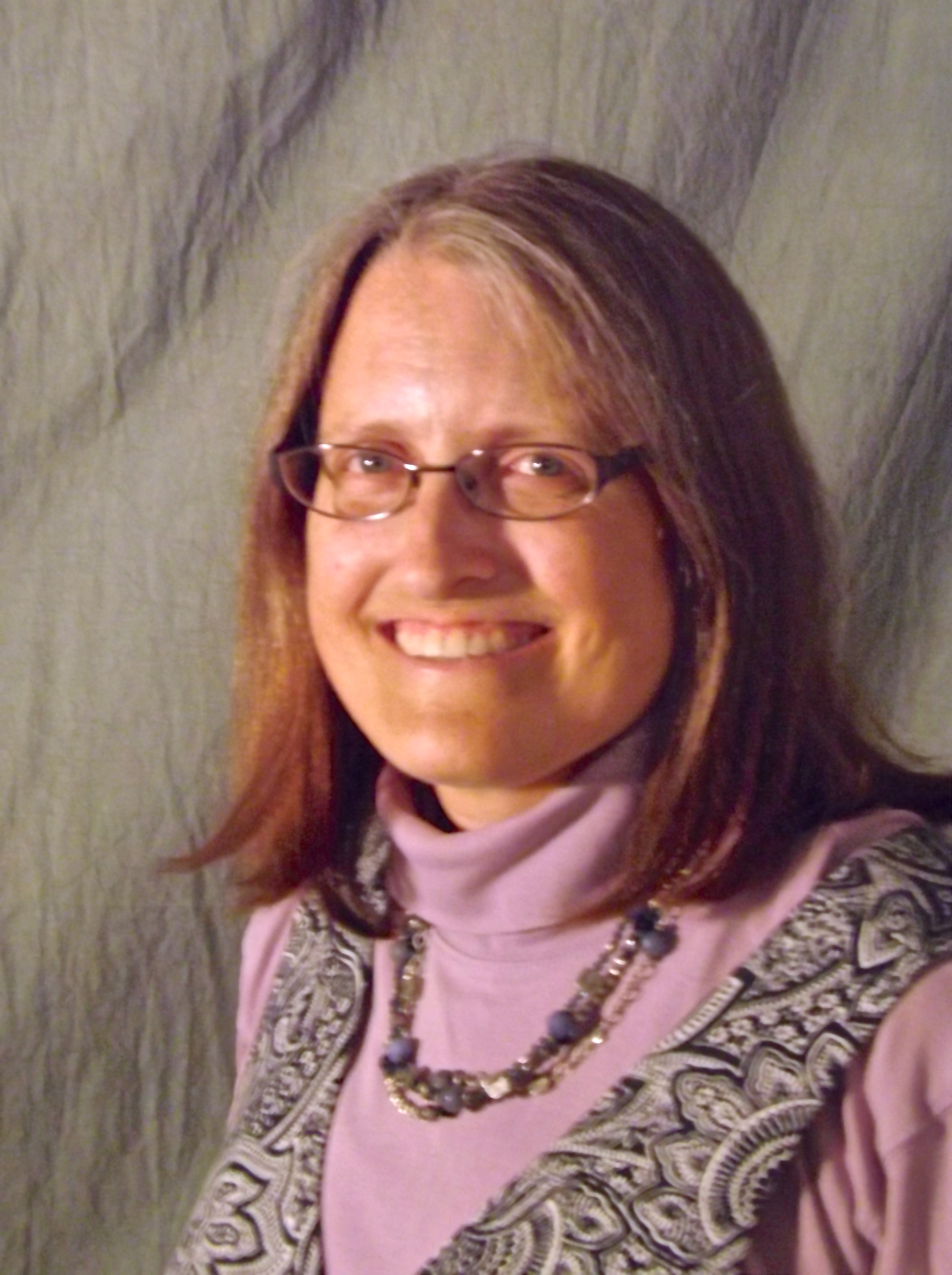
Alison Hapka
Alison Hapka teaches high school physics and chemistry and works hard each day to inspire young learners to love science and the pursuit of knowledge. She received a Bachelor’s degree in physics from Loyola University and a Master’s degree in geophysics from Boston College. She also took certification classes from West Chester University. Before entering teaching, Hapka worked in research and development for a hazardous waste remediation company. She has taught physics, chemistry, Earth science, and computer science at the high school level.
The mission of NSTA is to promote excellence and innovation in science teaching and learning for all.
Future NSTA Conferences
National Conference
Follow NSTA
When I began aligning my instruction to the Next Generation Science Standards (NGSS), I got lost in the details. But when I realized that phenomena could be used to anchor linked disciplinary core ideas, I started to visualize the course as a whole and was able to build storylines around the phenomena. I now begin each unit by asking students to observe or experience a phenomenon, generate questions, then design investigations to answer their questions.
How do you choose good phenomena?